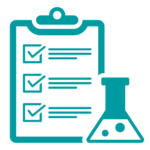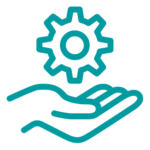Drinking water
Drinking water safety is essential for human health. We drink approximately 2 liters of water every day.

METHOD
BioCell Analytica’s methods can be used to ensure that drinking water is not contaminated with hazardous chemicals.
The methods can also be used to investigate how effectively such chemical contaminants are removed during drinking water treatment, if they are present in raw water, or if harmful substances are formed during the chlorination of drinking water.
Our methods are currently used by several of Sweden’s largest drinking water producers.
The EU’s new drinking water directive includes a requirement to implement a risk-based approach, which covers the entire chain from raw water to households, to ensure water quality. Our effect-based methods are well-suited for this strategy.

OUR OFFER
Our methods can be used to investigate the presence and purification efficiency of environmentally hazardous
chemicals in drinking water.

REPORTS
- In vitro bioanalysis of drinking water from source to tap, Water Research
- Assessment of source and treated water quality in seven drinking water treatment plants by in vitro bioassays – Oxidative stress and antiandrogenic effects after artificial infiltration, Science of the Total Environment
- Glass-bottled drinking water: a time capsule to study the historic presence of hazardous chemicals using effect-based methods, Environmental Sciences Europe
- Removal of oxidative stress and genotoxic activities during drinking water production by ozonation and granular activated carbon filtration

WHITE PAPER
In our White Paper “Kemiska föroreningar i dricksvatten – nya innovativa analysmetoder” (march 2022), you can read more about how effect-based analytics methods can be used to control chemical contaminants in our drinking water. The White Paper is in Swedish.

